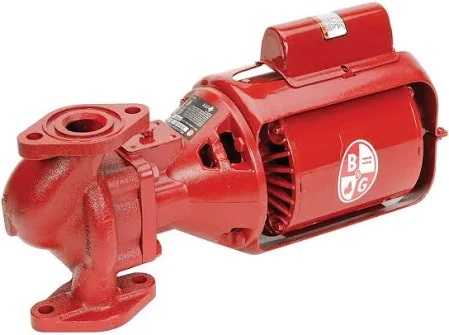Electric water pumps are becoming an increasingly popular choice in a variety of applications, from programmable additional heating in vehicles to precision and efficiency in industrial settings. But how do these pumps work?
In this blog post, we will explore the inner workings of electric water pumps, from the electrical energy input to the mechanical energy output that drives the pumping process. We will also take a look at the main uses of electric water truck pump and how they have evolved over time. So, if you are curious about the technology behind these pumps, just keep reading.

How Electric Water Pumps Work
Electric water pumps are powered by electricity, which is a great option for those who want to be environmentally conscious. These pumps can be used to move water in or around a home or business, and they are very versatile in their uses. If you’re considering installing an electric water pump system at your property, here’s what you need to know!
The Basic components of an electric water pump
There are three basic components that make up an electric pump system: the motor, the casing, and the impeller. The motor is what actually moves the water through the system; it’s powered by electricity, which comes from either a wall outlet or solar panels on your roof. The casing houses all of these components and keeps them safe from outside elements like dirt and debris (you’ll need to clean this part regularly). Finally, there’s the impeller—this is what actually pumps water through your pipes once all of those other parts have been put together properly!
How electric water pumps move water
The mechanics of an electric water pump are fairly straightforward: they use electricity to spin a turbine or impeller, which then moves water through pipes and into your house. The turbine or impeller itself is connected to two shafts: one that runs vertically and one that runs horizontally; when the shafts spin together they create suction pressure within the pipe system that moves the water up from its source (such as a well) into your house where it can be used for drinking or bathing purposes.”
Types of Electric Water Pumps
While electric water pumps come in all designs, shapes and sizes, it is important to understand their differences and how they fit your needs. In this section, we’ll provide a brief description of 3 of these pumps, how they compare and how they work, namely: submersible pumps, centrifugal pumps, and positive displacement pumps.
Submersible pumps
Submersible pumps are the most common type of pump used in residential homes and commercial businesses. They work by using a spinning impeller to force water through the pump’s body and out its discharge port. The process is similar to how a toilet works—the spinning impeller creates a suction that pulls dirty water into the pump’s body, where it’s cleaned by internal components before being pushed out of the discharge port.
Centrifugal pumps
Centrifugal pumps are often used when there isn’t room for a submersible pump, such as in large industrial settings where there is ample space for them to be installed above ground. Centrifugal pumps work by harnessing kinetic energy from moving parts to create pressure within the pump’s body, which forces dirty water through an intake port before being discharged through another port on the opposite side of the body (usually positioned above ground).
Positive Displacement pumps
Positive displacement pumps are the most common type of electric water pump. They are also known as constant-displacement pumps because they can deliver a set volume of water for each revolution.
Unlike centrifugal pumps, which draw water into a rotating impeller and force it out through a discharge pipe, positive displacement pumps move water through the entire pump without relying on any movement outside the pump’s casing. The impeller draws in a small amount of water at its center and pushes it out through an outlet opening. This action creates a vacuum behind the impeller that pulls in more water to replace what has been pumped out, maintaining constant flow throughout the entire cycle.
Conclusion
It’s clear that electric water pumps are a necessity for any home. They provide a safe and efficient way to transfer water from one location to another. Electric water pumps can be purchased in a variety of different forms, so it’s important to carefully consider the factors that matter most when choosing your preferred model. This can include things like size, design, power supply, and cost.
In this article, you have learned the importance and function of electric water pumps. You have also been given information on 3 different types of electric water pumps available, as well as the factors to consider when choosing one. Hopefully, the information provided will help you select the one best suited to your needs.




Join the conversation: